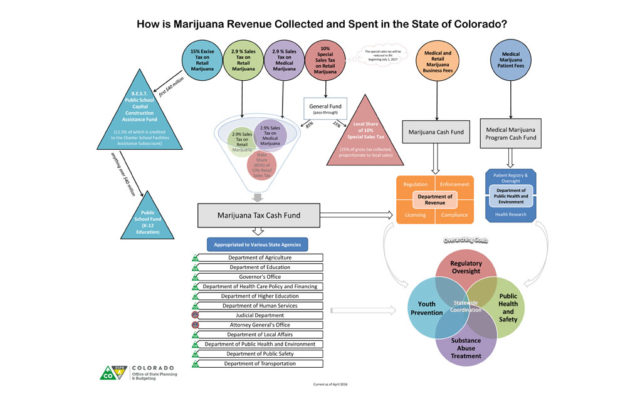
Almost a year ago, voters across Colorado weighed in on Proposition BB, deciding whether or not to allow the state to keep the excess tax revenue it raised through marijuana retail sales or to refund it to taxpayers to the tune of $8 per person.
Overwhelmingly, Coloradans told the state to keep the money, with 69.3 percent voting in favor of allocating the total of excess revenue collected ($26.1 million) to school programs.
A year later, some of that money is to about to be distributed to schools throughout the state that have applied for Bullying Prevention Grants up to $40,000 that are used to fund bullying prevention programs. This is the first glimpse into what such tax money can actually do for Colorado kids.
When Amendment 64 passed in 2012, it came with promises of raising much needed tax revenue to benefit Colorado schools, but no one knew quite how much money would be available or exactly how it would be used.
In 2013, Colorado voters fulfilled the campaign promises of Amendment 64 by passing Proposition AA, permitting the state to charge a retail marijuana tax.
Turning the vote into policy, legislators came up with an estimate of how much money would be collected in the first year of legal marijuana sales. Basically, they created a best guess budget for a new market that had never before existed.
The number they came up with was $40 million, better than a wild guess, but still $26.1 million under the actual retail tax revenue collected, which was $66.1 million. Due to the state’s constitutional spending limits (TABOR), the state had to refund the excess revenues unless voters granted permission to keep and spend the balance. Enter proposition BB which, as previously mentioned, passed last year.
Even with the policy framework laid and actual revenue numbers replacing mere estimates, the allocation and its effect were still nebulous and hard to imagine. Just look at the chart the Office of State Planning and Budgeting created to help explain it! It is complicated to understand the supply of money and difficult to get the sense of its potential effect.
It isn’t a lot of money, a drop in the $5.6 billion Colorado state budget for schools, but if it is used effectively, it could make a measurable difference by way of programs like the Bullying Prevention Grant.
The Colorado Department of Education (CDE) is dispensing $2.9 million to fund a minimum of 50 schools with up to $40,000 each to address bullying during the 2016-2017 year.
As schools around the state apply for the funds, they are partaking in assessments of the bullying problem in their individual schools, setting an important baseline as Colorado addresses its part in this national issue.
“The grant is funding assessments to help position schools in terms of need and specifics of individual problems, asking students, parents and faculty directly how safe they feel with regard to bullying,” says Adam Collins, bullying prevention and education grant coordinator at the CDE.
Bullying affects thousands of students each year. According to the CDE, 15 to 30 percent of students report being a part of bullying as either a victim or perpetrator, depending on their age.
Collins says that involvement in bullying, regardless of one’s role, can have lasting negative consequences, like decreased academic achievement or an increased likelihood of dropping out of school. The grants, he says, have the potential to make a meaningful difference.
“In general what we are trying to do is take a systems approach to preventing bullying,” Collins says. “We don’t want to just throw money at schools, we want to help them build an infrastructure into the system that can be in place even after the grant funds are expired so they continue to do the good work of preventing bullying.”
There are several ways the CDE is working to change that. They will be offering evidence-based curriculums to schools that are proven to effectively lower bullying rates.
“The idea with those curriculums is to reach out to students directly in order to teach skills like how to address bullying if they are being victimized, but also if they are the one perpetrating bullying,” Collins says.
Another big part of the CDE’s approach is developing healthier cultures in schools, one that is warm and inviting, “one in which kids feel safe and where bullying can’t thrive,” Collins says.
This opinion column does not necessarily reflect the views of Boulder Weekly.














